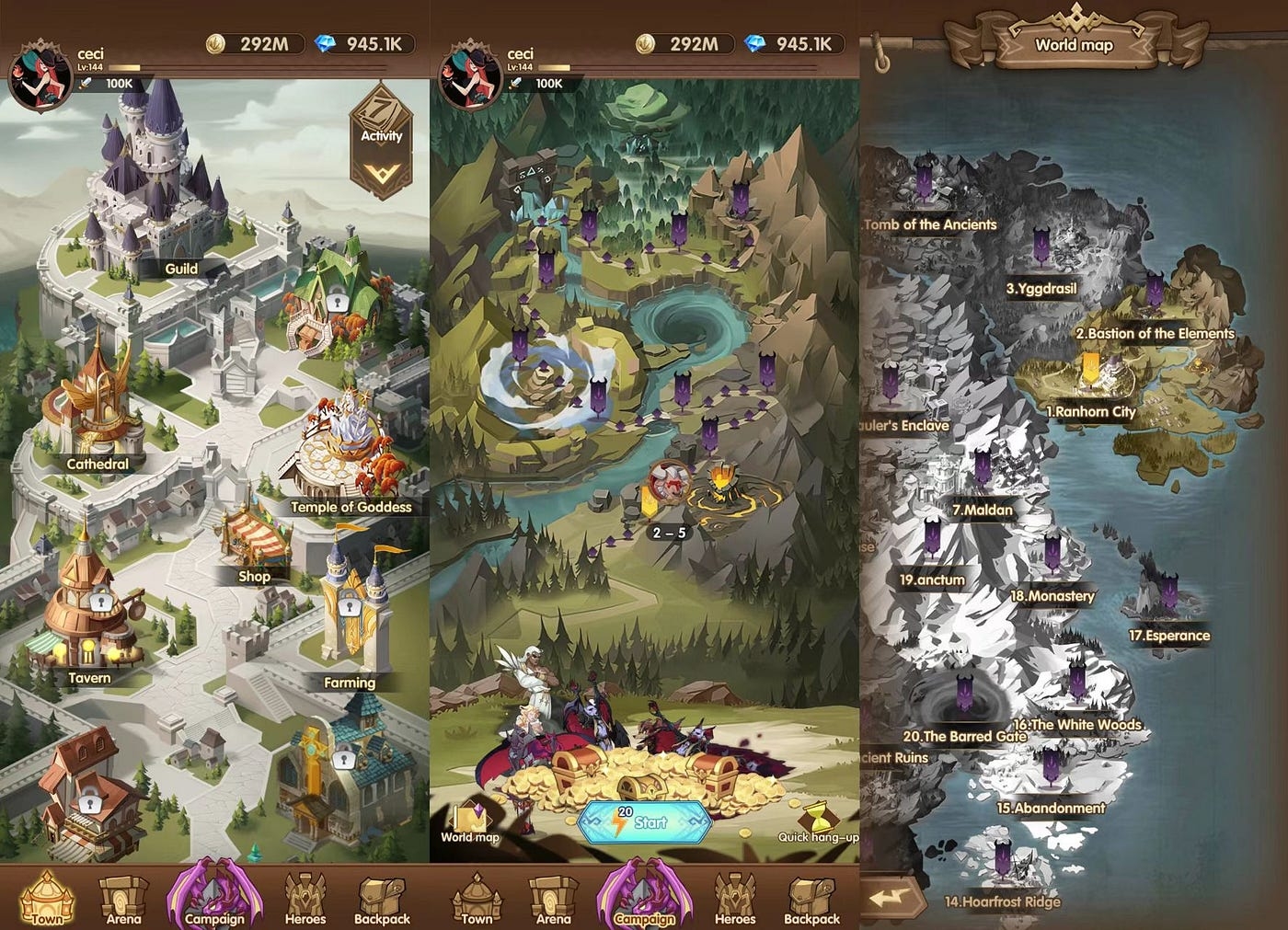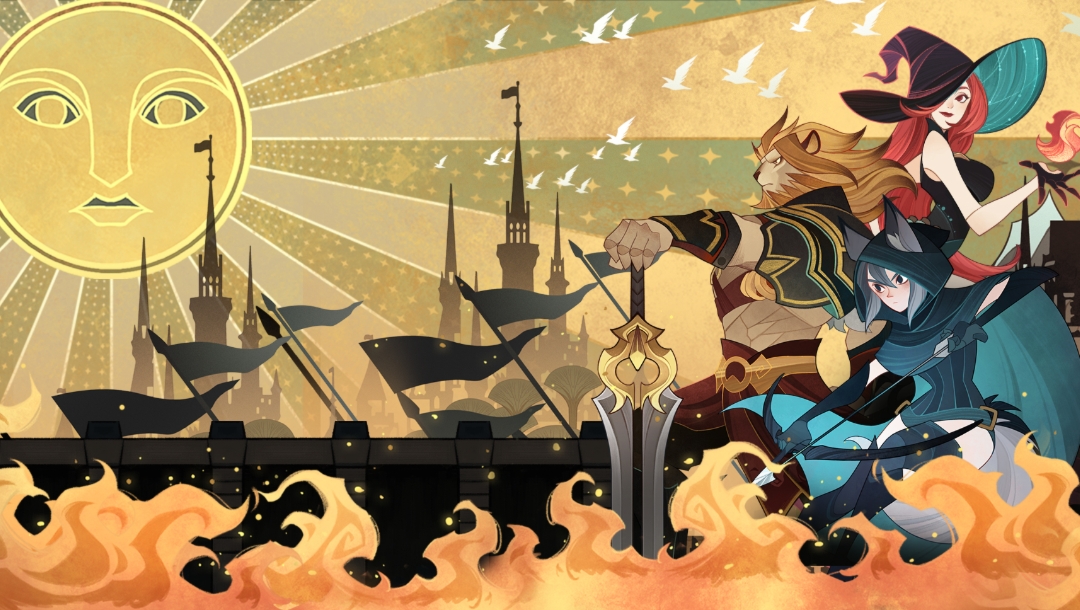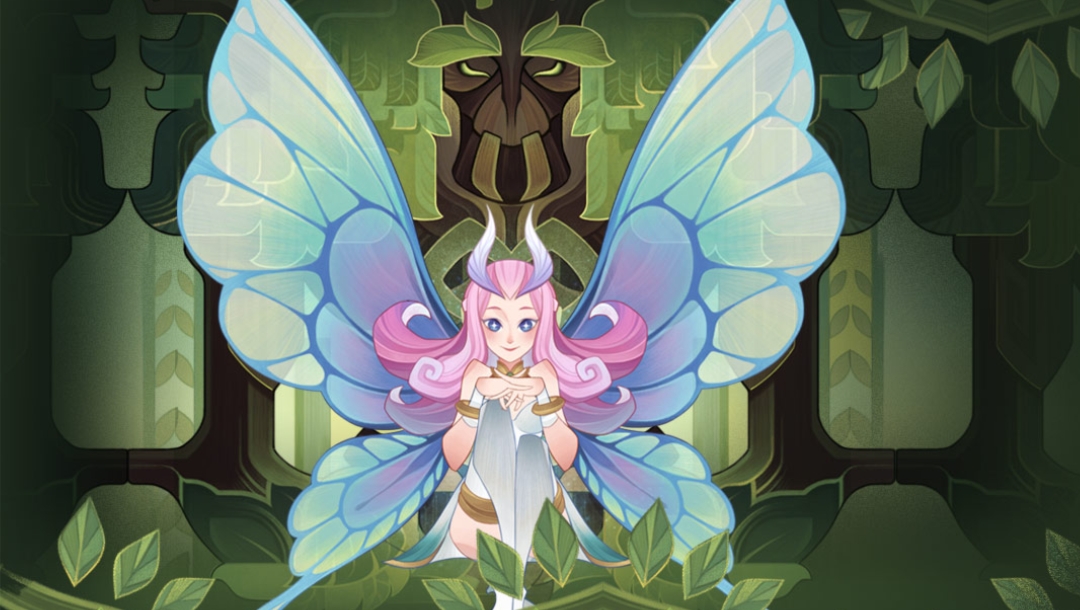Existence problems of blockchain game industry and solutions from For Metas
There are two major entry barriers in the GameFi world, the technical barriers and high initial investment. For Metas is transitioning from making part of the game on blockchain to making everything on blockchain and dividing users into “paid tier” and “free tier” to solve this problem.
For Metas emphasizes both playability and profitability of the application
For Metas embraces Web2.0 and Web3.0 users with the Web2.5 model

Foreword
For Metas, as an aggregated Web 3.0 application platform, will launch its first incubated game, Glory Land, in early 2023. So what exactly is the strength of For Metas? Why For Metas can achieve the mainstreaming of Web3 applications In this article, we will find out.

Lowering the two main entry barriers for the current Web 3.0 games
There are currently two types of barriers to entry, technical barriers due to immature infrastructure and limited access to assets due to asset prices and/or their scarcity.
In terms of the technical threshold, the current blockchain game basically requires every game player to have a crypto wallet as well as to trade on crypto exchanges first. This requires players to have a basic knowledge of cryptocurrencies and master the on-chain transactions. The transaction fees and crowded network can also be a hindrance. According to the statistics, a single transaction gas fee for ethereum trading had been as high as $17.95. It will be a challenge to attract gamers who have never been exposed to cryptocurrencies, as well as younger players. The crowded network creates an even greater barrier for less-advanced equipped players and those lacking patience.
One blockchain game player once complained, “I kept getting error messages about transaction processing, with warnings that fees were higher than usual due to “blockchain congestion”. Then the Dapp stopped loading. After several failed attempts, I couldn’t even access the game.” This is the real experience of one of those gamers.
For Metas, on the other hand, only make part of the game on the blockchain to achieve the transition.The game retains most of the off-chain stack. The on-chain portion of the game is typically the assets represented by NFTs, as well as in-game tokens that can be freely traded and transferred in an open and permissionless marketplace. Thus, the game activity takes place off-chain, and then the economic settlement is done on-chain. Users can also choose whether or not to withdraw assets from the blockchain; the user experience is similar to traditional games in some ways; latency is not an issue; and any updates can be rolled out smoothly.For Metas will offer more options to users in the future, when the expansion of the underlying infrastructure becomes a reality and the deployment of on-chain assets to the whole game will be a natural transition.
From the perspective of pre-investment or rare assets, the rarer the asset is, the more available it is for whale investors because of the higher likelihood of appreciation due to limited supply. In the early days, the price of an NFT for some popular games ranged from thousands to tens of thousands of dollars, making the situation even more dire given that two-thirds of the gaming community is from emerging economies.
While For Metas offers both paid and free models through user tiering, Most crypto games were play-to-earn models that required players to pay first before they could actually play. This can turn away many players in the early days. As the upcoming game Glory Land allows anyone to play, If a player does not have a paid role, they can earn free mint NFT by taking part in official activities. Free players can experience the basic gameplay of the game, enter the campaign, and get some basic game items as a reward. Paid players have more features to experience compared to free players, such as the ability to farm $4MW token without locking up, and all the NFTs are tradeable and synthesizable. There are also some other benefits.
These NFTs belong to the player. At the same time, free players have the opportunity to receive game tokens and other rewards in the future. This gives free users the opportunity to earn income by playing the game as well, thus stepping into the role of a paying player.
NFT is the core asset of the Glory Land game, which is a collector’s item combining scarcity, utility, and ornamentation. The design is to create the value of scarcity and uniqueness for players. In addition to the visual difference, there is also a rarity level difference. The higher the level of NFT, the faster players can pass the level while obtaining more staking and farming output. The NFT is a limited-number and limited-time one-time release offer that players can only buy in the secondary market at a later stage. For Metas NFTs also have the property of secondary use scenarios, such as when a game NFT can be used in another game launched on the platform, which makes For Metas NFTs have a lot of use cases and practical value, giving them a dimension of collection and value-added that will likely make them very valuable and cause their price to rise rapidly.
The Glory Land NFT mystery box is now officially available on the official website, please check here for details.
To summarize
For Metas lowers the barrier of entry for users by
Accessible upfront investment, users can experience most of the game play without recharging.
Detailed guidance and tutorials: For Metas attaches great importance to user education, and has detailed tutorials for both platform and released games, so that players and web3 newbies can easily get started.
Only partially on the blockchain. Because of the unique nature of blockchain infrastructure at this point, only asset transactions, assets, and props are made on the blockchain. The rest of the game logic is still handled by centralised services. This solves the problem that users need to interact with smart contracts often while still allowing users to own assets independently.

Playability and profitability go hand in hand
In the early days of Gamefi, a few breakout games gained huge capital and user attention in the bull market and represented the first wave of “mature” Web3 games. In reality, these games were nothing more than decentralized financial (DeFi) applications with poor design and gamification. Any traditional gamer who understands the realism, storyline, and aesthetics of web2 games would be outraged to hear someone say that those so-called blockchain games are the future of gaming. For any player with gaming experience, most blockchain games today are not playable. These have led to the chain game often being mocked as “blockchain gamification” rather than “blockchainization.”
Playability is a prerequisite for attracting new users to the game. Compared to the poorly playable “farming game” in the last market cycle, the overall production quality of the current blockchain game is improving significantly, but it is still far from the ideal state. The general cause of this phenomenon is that the team is not brave enough to do originality and innovation in gameplay because it requires a longer development cycle and higher cost, which necessitates more new players to cover the cost. In the blockchain industry, which is rapidly iterating, few developers are willing to take such risks. Coupled with other uncertain risk factors such as underlying blockchain performance risks and being hacked, many developers and the team turned to games that come with faster cash flow. The industry is always developing, projects without value will not always exist, and the era of making quick money will eventually end.
For Metas, going back to the essence of a good game — the ultimate user experience, clever gameplay design, and engaging plot — is the key to retaining players for a long time. If the game only stays in “earings,” then it will not last long anyway. For Metas, with years of experience in traditional games, it is very clear that making money is the process and entertainment is the purpose.
Quality traditional games such as DNF, Fantasy Westward Journey, World of Warcraft, and many other games have many things we should learn from them. To keep making money, game developers need to give users better game content. After getting their entertainment needs met, users spend more money in the game, creating a solid business loop. The main motivator for players should be that the game is enjoyable, so that they will play for reasons other than money; a good player structure is the foundation of the game’s long-term survival.
Comprehensibility, visibility, and profitability are the main focuses when building and developing a game. Comprehensibility means that players can easily understand how to strengthen their attack power and how to pass the game more quickly; visibility means that players can clearly feel the impact of certain types of attributes or values during combat or gameplay (e.g., the increase in the blast rate due to the blast attribute); and benefit differences mean that different attributes or values should have different effects in different scenarios. Take For Metas’ upcoming first game, Glory Land, as an example. As an IDLE game, it has rich built-in gameplay, including collecting cards, informing strategy, and so on. All players need to do is collect NFT heroes, participate in battles, level up, and start gaining revenue. Glory Land is a game with high variance that requires skill. Differences in players’ team formation, battles, experience, and knowledge can make a big difference in the progress of the game. In terms of comprehension, the characteristics of heroes, and the size of combat power, players can easily clarify through the display of the game interface, visibility by clicking on special effects to gain blast rate, and different game gains by holding different levels of NFT and deploying different strategies. In addition, it has the following features:
Support multiple combating mode
Support a variety of game modes, including PvE, PVP, Guild etc. PvE is great for players to get through the game independently and earn NFT rewards in the process. All heroes will actually attack automatically; players only need to click when they want to use special effects. Players can even choose the auto-battle mode, which completely automatically passes levels. In addition to the regular gameplay such as PVE and PVP, players can also use NFT cards to mine $4MW, join different guilds and receive guild missions to get more rewards, gain personal BUFF bonus rewards, or participate in various themed seasons.
Game Challenge
Such as the upcoming game Glory Land requires users to improve their strategy and skills. As an IDLE game, it has a wealth of built-in gameplay, including cultivating, cards, strategy, etc. Some players have a low learning curve, and some have a high learning curve. By satisfying users with different skill levels, we give players a sense of satisfaction and the opportunity to obtain NFTs of different values. With this division of users, players do not feel like they are doing repetitive and unnecessary work but get the thrill of nurturing, which greatly motivates the activity and retention of users.
We believe that GameFi’s definition of gameplay is narrower than that of traditional games, where storytelling, immersive experiences, etc. can keep players interested. For newcomers to the game, simple games are naturally popular. But as the game progresses, the simplicity of the game content design and narrative can easily make players bored and lose interest.
In addition to this, GameFi places more emphasis on the need to stimulate trading, gaming, and collaboration between players. Driven by revenue, it further stimulates players’ interest in exploring the game and also allows the game’s assets to be appreciated in the process. Playability is not only a selling point but also should be able to effectively become a reservoir for players’ financial behavior. To prevent selling pressure, the game should be designed with a variety of consumption paths so that supply and demand are in a relatively balanced state to prevent oversupply and devaluation causing a death spiral.
For example, in Glory Land, players enter the game by free minting or buying cards, consume $4MW, and get NFT fractions in the process. The fractions can be used (consumed) to create mystery boxes, which players can then sell on the secondary market. Since the cards are minable, players can choose to stake them directly for mining or upgrade them by consuming the required cards in-game to earn a higher staking income and pass the game faster. Instead of the old-fashioned way of tokens producing tokens, For Metas lets NFT produce NFT, and all the outputs are fixed outputs. Players put tokens into fixed assets, effectively absorbing the inevitable selling pressure of game outputs.
Apart from enabling suitable traditional game to be played on the blockchain, it also broadens the game scene, empowers players to build and make decisions for themselves in the game, expands possibilities, and allows GameFi to evolve like a living organism, such as by allowing users to create their own guilds and make rules. Capturing quality game opportunities to generate lucrative income is time-consuming and costly for users; for project parties, how to stand out from the complicated blockchain game market becomes the primary goal, in addition to designing sophisticated game play and economic models.

Embrace both Web2.0 and Web3.0 users
At present, GameFi players in Web3 have a dominant demand for making profit and are “bloodsuckers” to the economic system, while players in traditional Web2 are real players with a dominant demand for games and are “blood suppliers” to the economic system. For Metas believes “GameFi has more Web2 users than other Web3 applications due to its inherently inclusive nature, and the world’s 3 billion gamers have not really flocked to Web3.”
GameFi, as the model closest to Web2, has the potential to solve the common pain points of traditional games and also has the potential to attract more Web2 users, so how to bring more Web2 users into Web3 will be the focus of the platform’s development.
The barrier that prevents a large number of Web2 users from entering the mainstream of Web3 is the poor ease of use of wallets today. When a new user attempts to use a Metamask wallet, the first thing he or she will see is a long list of seed words and a warning not to reveal them to anyone else.
The user then remembered the various scams he had heard, so he hurriedly found a piece of paper, copied down the seed words, and hid them inside his drawer. Immediately. Afterwards, he realized that he didn’t have any ETH, which meant he couldn’t perform any actions. The user then taps into Metamask’s fiat currency deposit feature, filling out various information and receiving the corresponding tokens while always being vigilant about the security of the environment and whether the tokens have been compromised. Of course, the above is a very idealistic scenario. The real situation is more likely to be that 80% of the users abandoned their accounts when they saw the seed word, and 80% of the remaining 20% left Web3 before making a deposit.
For Metas, on the other hand, opens up access to web2 users in a variety of ways.
Email Registration
The current web3 is an unhealthy stock market.For Metas enable more users to gain access to Web3 applications in a variety of ways. From platform registration to accessing the game, For Metas adopts the concept of Web 2.5, so users can directly use a Web2 account to log in. The user can easily register by email and simple verification. After registration, it will randomly generate a wallet account where users can deposit assets and send assets. When the user sends assets, they need to go through the verification code to verify the security. Later, Metas will be connected to Google, Facebook accounts, Twitter, WeChat, and other familiar Web2 login methods. Please see the platform tutorial for a detailed registration tutorial.
Recharge with fiat currencies
Web2 users have a lot of trouble because depositing is hard, Web3 terms are hard to understand, and on-chain transfers can’t be changed.Usually a user goes through the following process when topping up the Gamefi project: “CEX fiat deposit; buy ETH or other blockchain tokens; withdraw to an on-chain wallet; swap GameFi platform tokens; platform top-up.”New users spend a lot of time and effort in each of the above-mentioned steps and are prone to errors. For Metas, on the other hand, greatly expands its potential target user base by accepting multiple ways to top up or recharge. Metas currently accepts fiat currency, platform tokens, partner tokens, and other cryptocurrencies, and plans to add more payment systems in the future.
Ending
For Metas as the first aggregated application Web3 platform, with its own industry advantages and deep understanding of web3, will lower the user threshold and embrace the web2.5 core mechanism both web2.0 traditional users and web3.0 natives, opening the login portal for hundreds of millions of users. for Metas supports Ethereum, BSC, Polygon For Metas supports Ethereum, BSC, Polygon, Ethfair, PLUG, Hashbit, Gton Capital underlying public chain, the first game Glory Land will also officially land, players can already start to buy blind boxes and get pledge rewards, for more details please check the For Metas official website.
Last updated